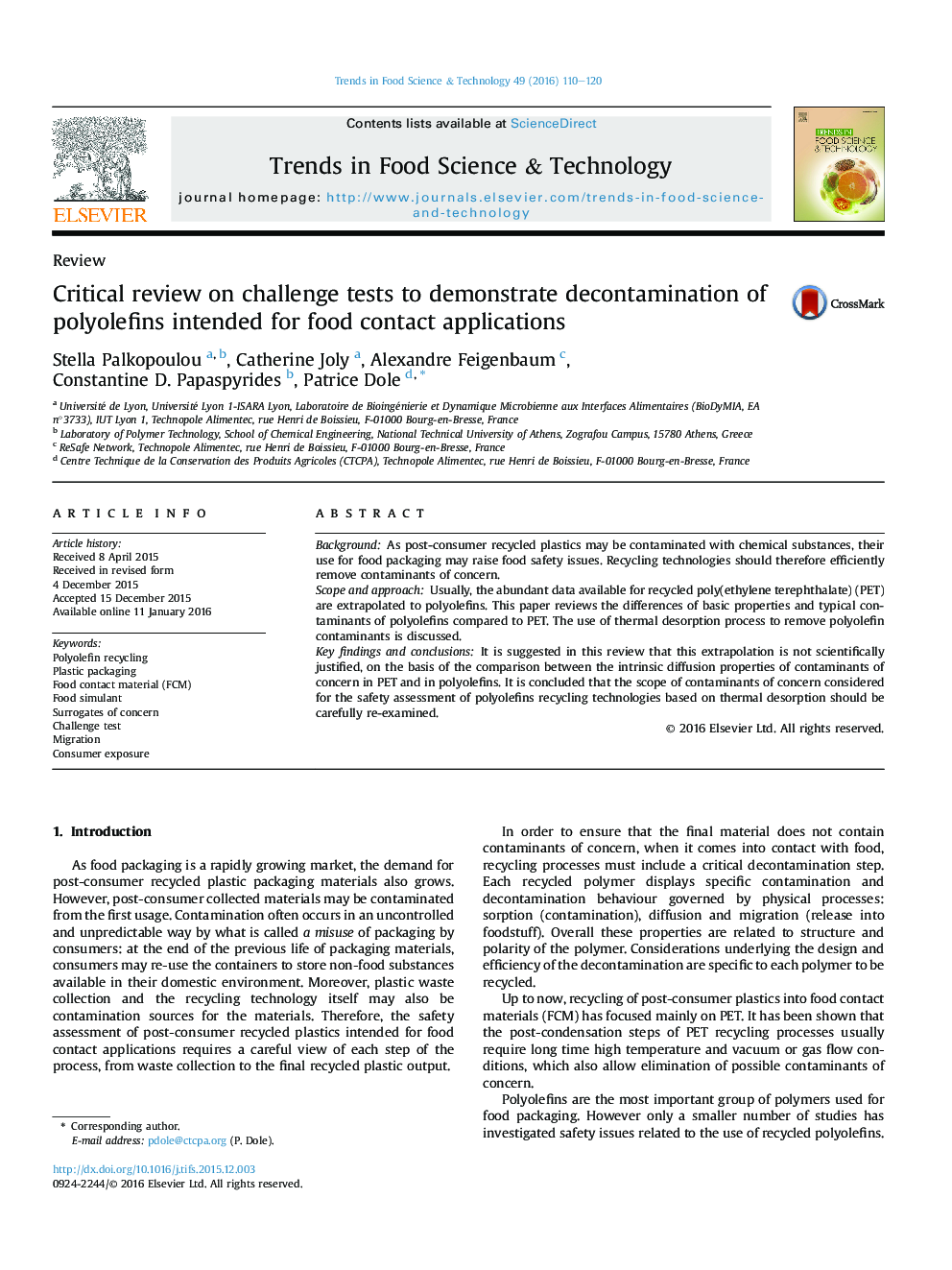| Article ID | Journal | Published Year | Pages | File Type |
|---|---|---|---|---|
| 2099722 | Trends in Food Science & Technology | 2016 | 11 Pages |
•Diffusion in polyolefins is drastically faster compared to PET. Polyolefins can be then contaminated by high MW substances.•Consequently the challenge test used for PET, based on depollution of volatile substances, cannot be used for polyolefins.•Additionally migration tests must be based on adapted analytical methodologies to determine higher MW substances.•Thermal desorption, as depollution process, should not be efficient enough to remove all types of polyolefin's contaminants.
BackgroundAs post-consumer recycled plastics may be contaminated with chemical substances, their use for food packaging may raise food safety issues. Recycling technologies should therefore efficiently remove contaminants of concern.Scope and approachUsually, the abundant data available for recycled poly(ethylene terephthalate) (PET) are extrapolated to polyolefins. This paper reviews the differences of basic properties and typical contaminants of polyolefins compared to PET. The use of thermal desorption process to remove polyolefin contaminants is discussed.Key findings and conclusionsIt is suggested in this review that this extrapolation is not scientifically justified, on the basis of the comparison between the intrinsic diffusion properties of contaminants of concern in PET and in polyolefins. It is concluded that the scope of contaminants of concern considered for the safety assessment of polyolefins recycling technologies based on thermal desorption should be carefully re-examined.
